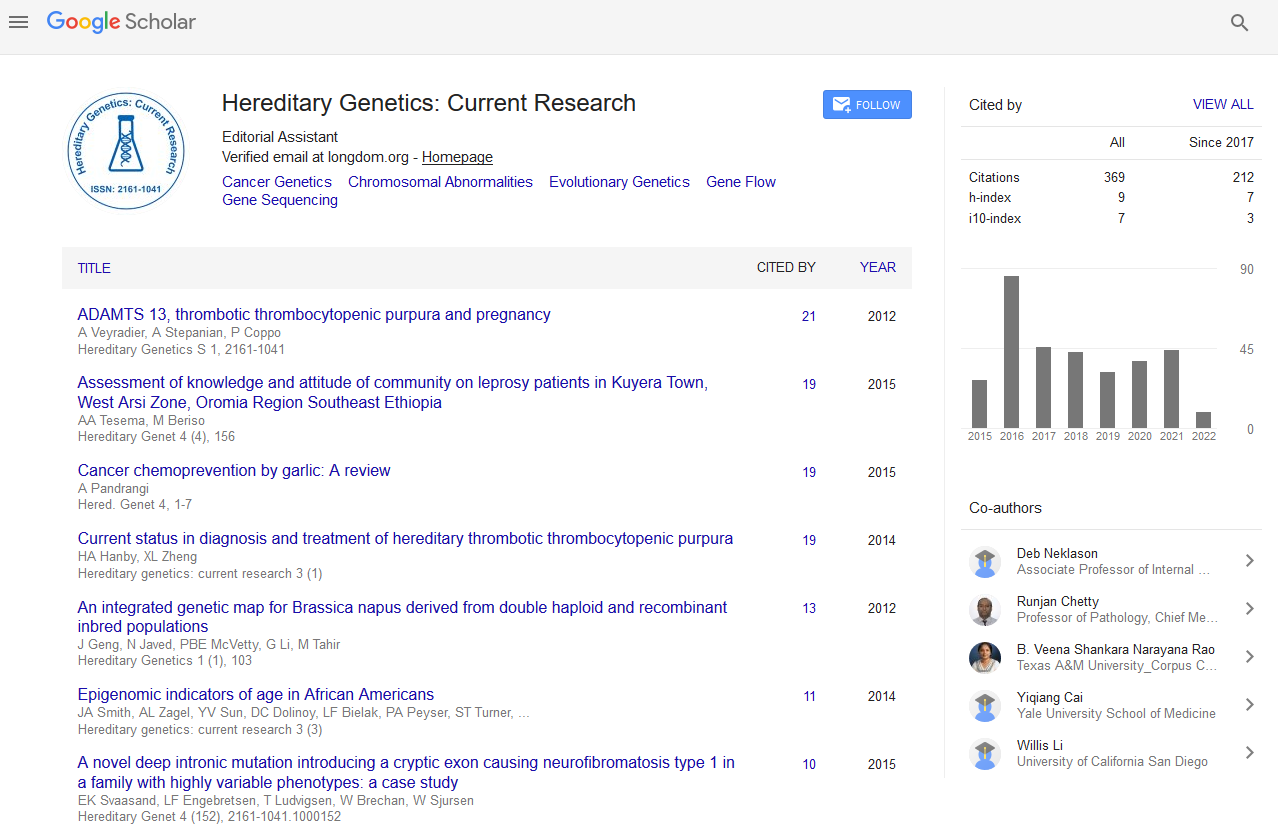PMC/PubMed Indexed Articles
Indexed In
- Open J Gate
- Genamics JournalSeek
- CiteFactor
- RefSeek
- Hamdard University
- EBSCO A-Z
- NSD - Norwegian Centre for Research Data
- OCLC- WorldCat
- Publons
- Geneva Foundation for Medical Education and Research
- Euro Pub
- Google Scholar
Useful Links
Share This Page
Journal Flyer

Open Access Journals
- Agri and Aquaculture
- Biochemistry
- Bioinformatics & Systems Biology
- Business & Management
- Chemistry
- Clinical Sciences
- Engineering
- Food & Nutrition
- General Science
- Genetics & Molecular Biology
- Immunology & Microbiology
- Medical Sciences
- Neuroscience & Psychology
- Nursing & Health Care
- Pharmaceutical Sciences
Abstract
Current Knowledge on Exostoses Formation in Hereditary Multiple Exostoses: Where do Exostoses Originate and in What Way is their Growth Regulated
Staal HM, Witlox AMA, Mooij DT, Emans PJ, Ham JSJ, van Rhijn LW and Welting TJM
Multiple hereditary exostoses is an autosomal dominant inherited disease causing exostoses: growth on the bones of children. The disease is mainly caused by mutated exostosin (EXT)-1 or EXT-2 genes. These mutations yield non-functional EXT-gene products. Lack of functional proteins cause a defect in heparan sulphate synthesis and therefore in proteoglycan modification and cell signalling. It is assumed that a subset of chondrocytes form an exostoses, through a growth and differentiation process which is only partially understood. The place of origin of these exostoses-forming chondrocytes is still unknown. We also do not know in detail which processes influence the exostoses growth, and what shelters the exostoses from being resorbed by osteoclast activity. In this paper we systematically review the major pathophysiological theories of exostoses, with a focus on the aforementioned knowledge gaps.


